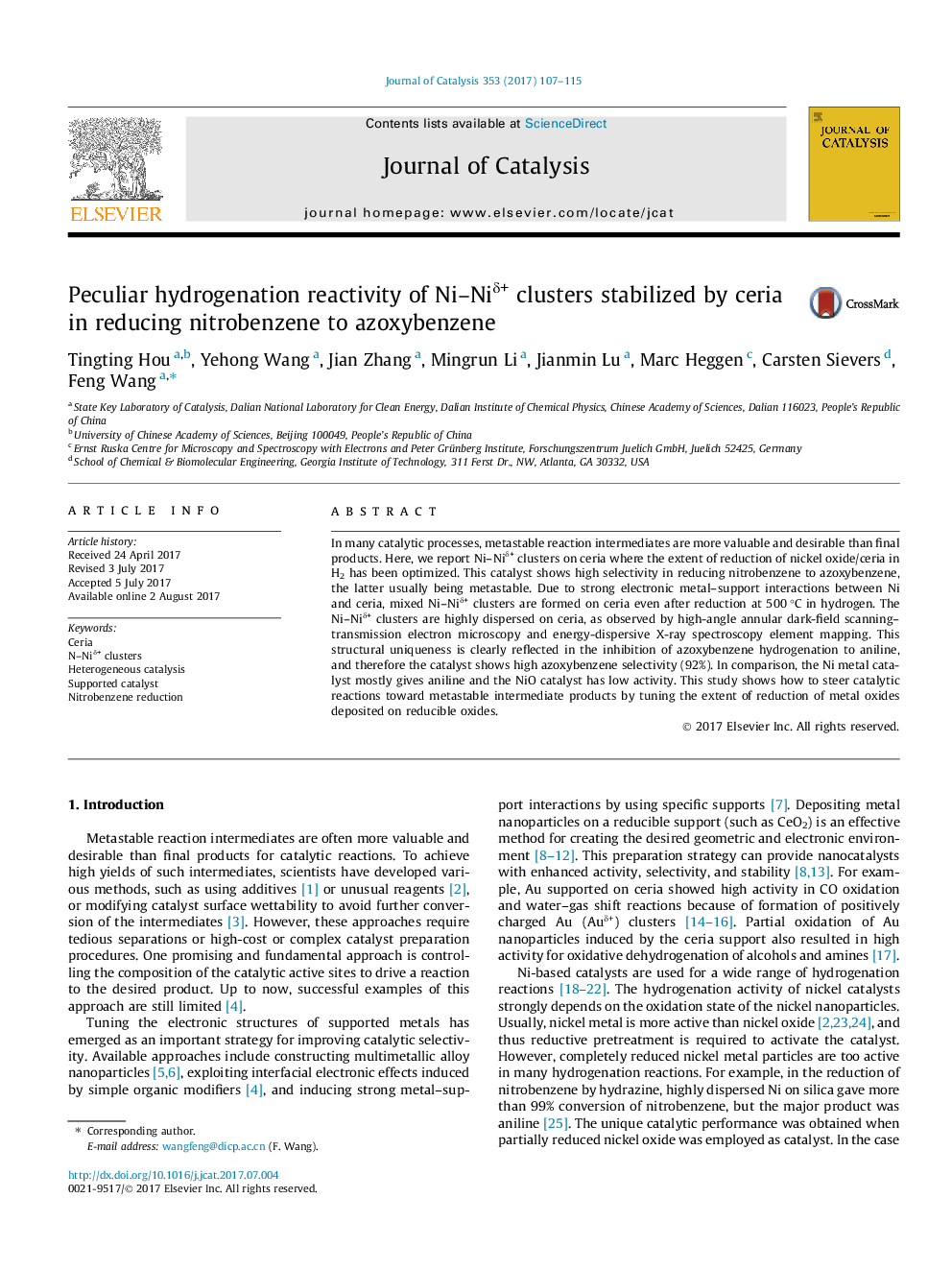| Article ID | Journal | Published Year | Pages | File Type |
|---|---|---|---|---|
| 6455557 | Journal of Catalysis | 2017 | 9 Pages |
â¢Ni and Niδ+ coexist on ceria even after reduction under H2 at 500 °C due to the strong electronic metal-support interactions.â¢The presence of Niδ+ could weaken the further hydrogenation of azoxybenzene to aniline over Ni/ceria.â¢Azoxybenzene was obtained over Ni-Niδ+/ceria with 92% selectivity during nitrobenzene reduction.
In many catalytic processes, metastable reaction intermediates are more valuable and desirable than final products. Here, we report Ni-Niδ+ clusters on ceria where the extent of reduction of nickel oxide/ceria in H2 has been optimized. This catalyst shows high selectivity in reducing nitrobenzene to azoxybenzene, the latter usually being metastable. Due to strong electronic metal-support interactions between Ni and ceria, mixed Ni-Niδ+ clusters are formed on ceria even after reduction at 500 °C in hydrogen. The Ni-Niδ+ clusters are highly dispersed on ceria, as observed by high-angle annular dark-field scanning-transmission electron microscopy and energy-dispersive X-ray spectroscopy element mapping. This structural uniqueness is clearly reflected in the inhibition of azoxybenzene hydrogenation to aniline, and therefore the catalyst shows high azoxybenzene selectivity (92%). In comparison, the Ni metal catalyst mostly gives aniline and the NiO catalyst has low activity. This study shows how to steer catalytic reactions toward metastable intermediate products by tuning the extent of reduction of metal oxides deposited on reducible oxides.
Graphical abstractDownload high-res image (58KB)Download full-size image
